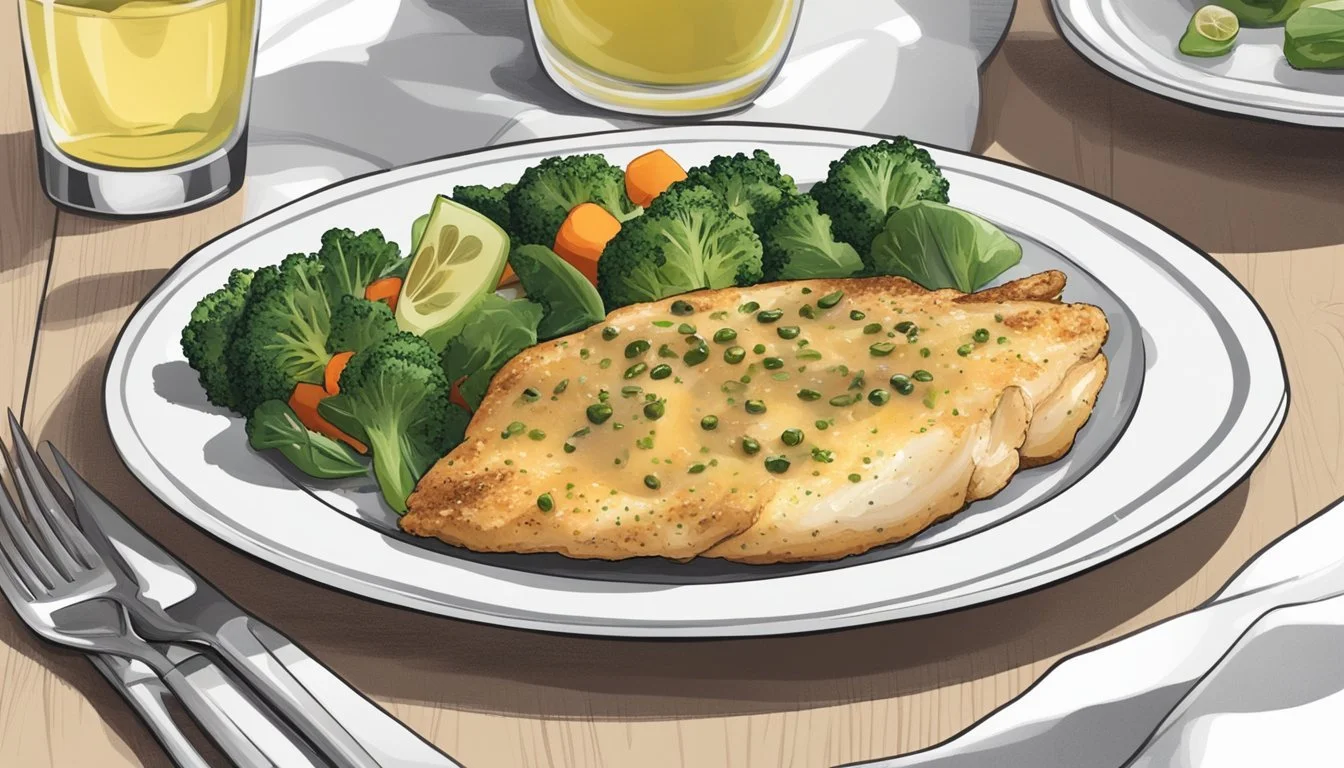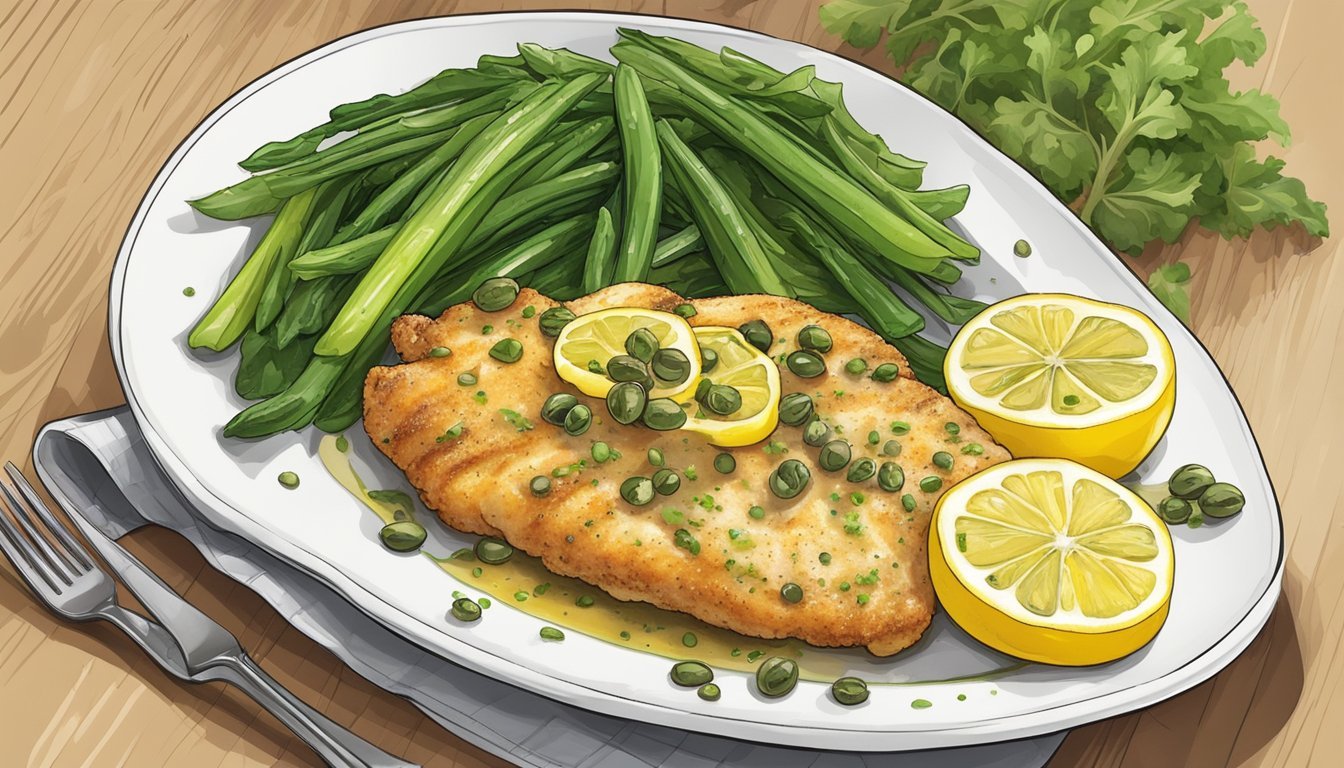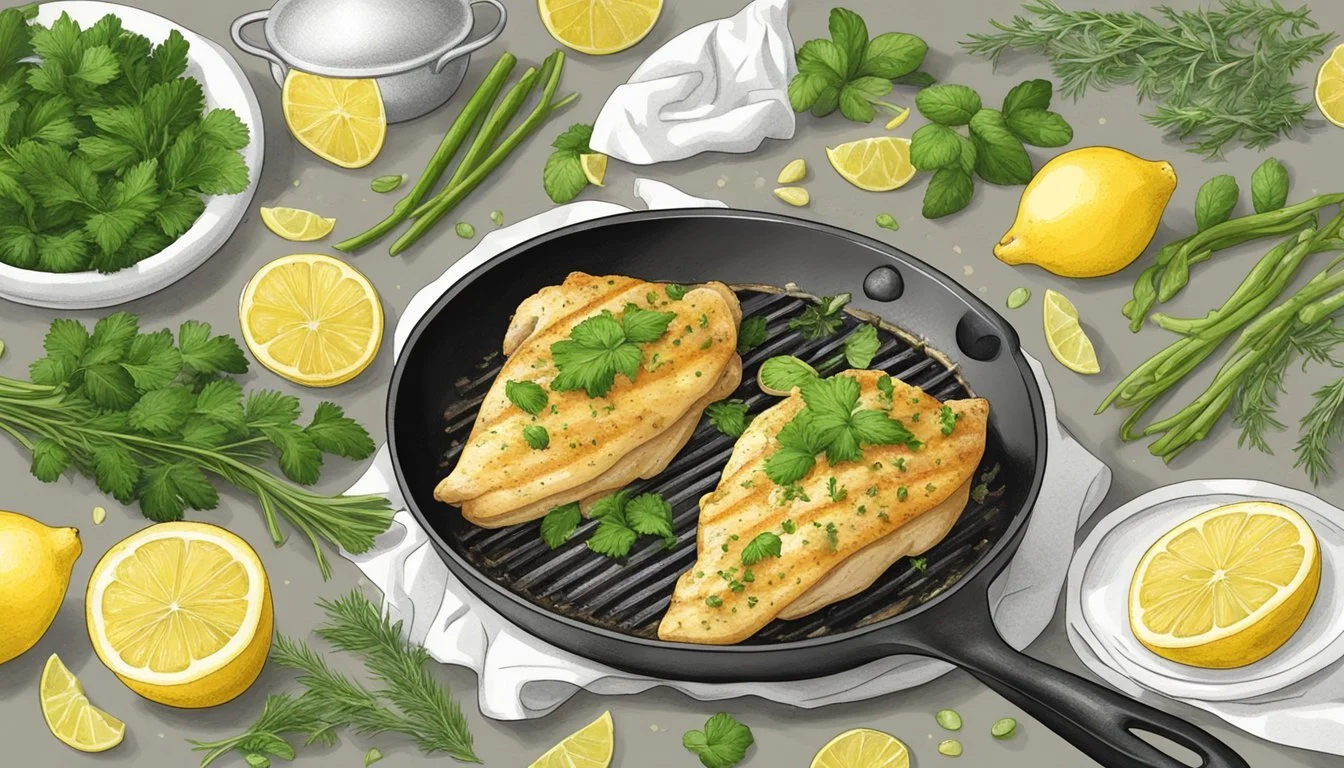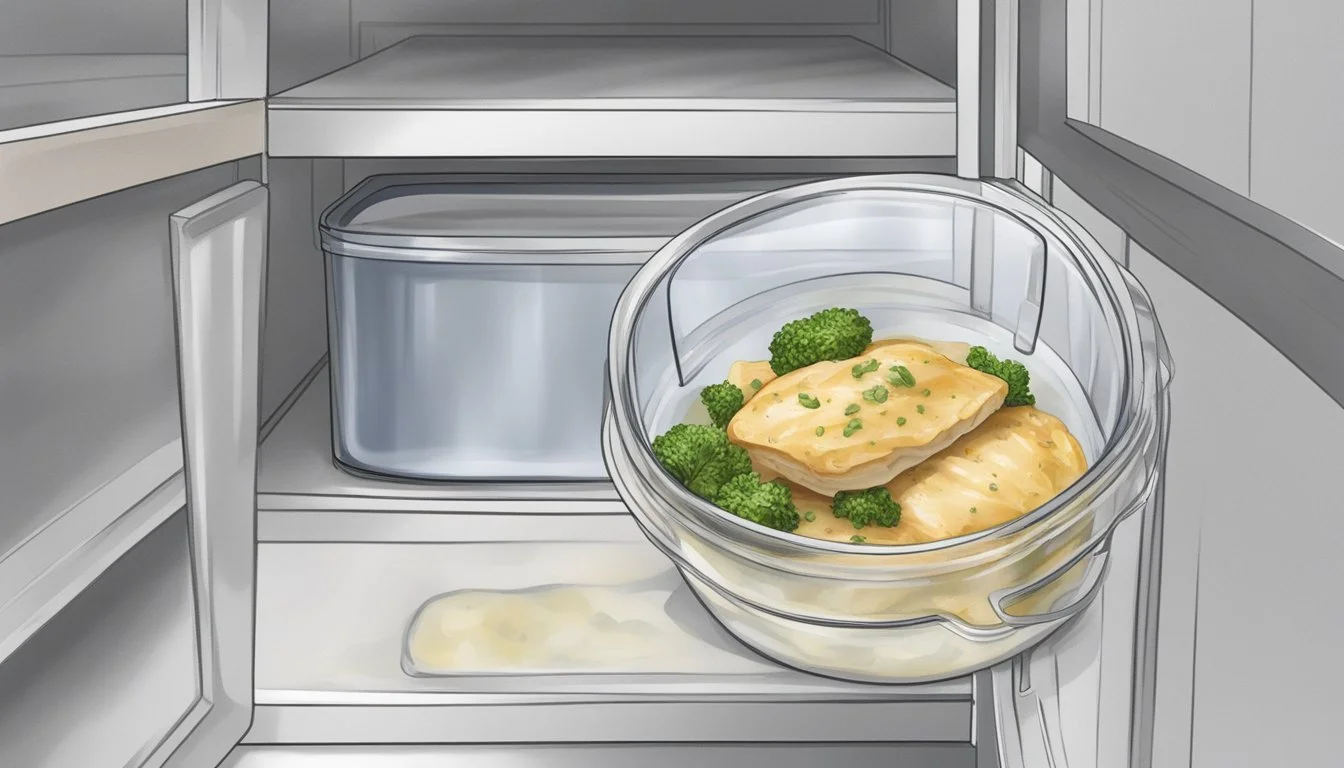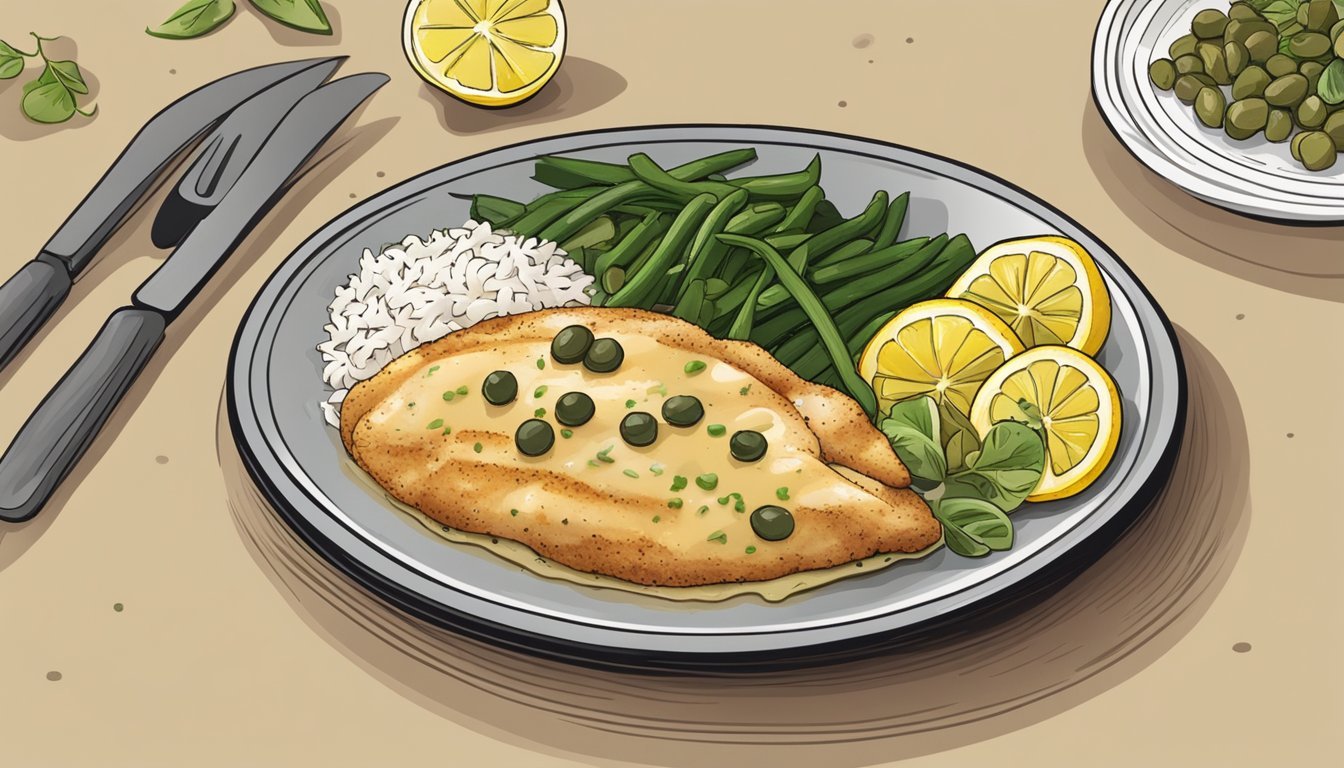How Long Does Gluten-Free Chicken Piccata Last?
Freshness and Storage Tips
When preparing a delicious gluten-free chicken piccata, it is essential to know how long it will last to avoid potential food safety issues. This dish, commonly made using chicken, lemon juice, capers, and a gluten-free substitute for flour, provides a delightful dining experience for those avoiding gluten.
Gluten-free chicken piccata can last up to three to four days in the refrigerator when stored in an airtight container. For best results, ensure the chicken is thoroughly cooked and cooled before refrigerating. Reheating should be done gently, either on the stove over low heat or in the microwave, to prevent the chicken from becoming dry.
Keeping the chicken piccata fresh also involves understanding the ingredients used. Items such as capers and lemon juice help to bring out the flavor, but it's the storing method that ensures it stays enjoyable for a few days after preparation. Proper storage will not only keep the dish safe to eat but also maintain its delightful taste.
Understanding Gluten-Free Chicken Piccata
Chicken Piccata is a classic Italian dish that combines tender chicken breast with a tangy lemon and caper sauce. When prepared gluten-free, specific ingredients are substituted to make it suitable for those with gluten intolerance.
The Basics of Chicken Piccata
Chicken Piccata involves thinly sliced chicken breasts that are pounded to about 1/4 inch thickness. These thin slices are then dredged in flour and sautéed until golden brown. The sauce is made with fresh lemon juice, capers, and a bit of white wine or broth. The dish is known for its bright, citrusy flavor and slight brininess from the capers.
Ingredients typically used:
Chicken breasts
Lemon juice
Capers
White wine or chicken broth
Butter
Olive oil
Garlic (optional)
What Makes It Gluten-Free?
For a gluten-free version, the traditional flour is substituted with gluten-free flour. Options like almond flour, rice flour, or a gluten-free all-purpose blend work well. Gluten-free bread crumbs can also be used for added texture. Care must be taken with all ingredients to ensure they are labeled gluten-free as cross-contamination is a concern.
Key gluten-free ingredients:
Gluten-free flour
Gluten-free bread crumbs
Verified gluten-free chicken broth or wine
Preparation methods remain similar, with careful attention to avoid any gluten contamination during cooking. This ensures the final dish is safe while maintaining the classic Chicken Piccata flavor profile.
Ingredients and Substitutions
A well-prepared gluten-free chicken piccata relies on carefully chosen ingredients and potential substitutions. This section addresses selecting quality ingredients and making necessary adjustments for dietary preferences, such as dairy-free options and alternative flours.
Choosing Your Ingredients
When making gluten-free chicken piccata, the quality of your ingredients is crucial. Start with chicken breasts that are halved and pounded thin for even cooking. Salt and pepper season the chicken effectively.
Garlic and lemon juice are essential for flavor, providing a fresh, tangy punch. Use chicken broth to enhance the sauce, ensuring it’s both gluten-free and low-sodium for better control over salt content.
Capers add a briny note, and fresh parsley offers a herbal touch. Butter or olive oil serves as a base for frying the chicken and creating the sauce. Both almond flour and a mix of coconut flour can be used for the breading.
Dairy-Free Adjustments
For those needing a dairy-free option, substitutions are straightforward. Replace traditional butter with coconut oil or a dairy-free butter substitute. These options ensure the sauce remains creamy and flavorful.
If using olive oil instead of butter for the frying process, choose extra virgin for the best taste. Dairy-free margarine can also be a good substitute, maintaining the dish’s rich texture.
Ensure any broth used is free from dairy additives. Many store-bought broths contain dairy as a stabilizer or flavor enhancer. Always check the labels to maintain a completely dairy-free recipe.
Gluten-Free Flour Alternatives
Choosing the right gluten-free flour is vital for the texture and taste of chicken piccata. Almond flour is popular due to its mild taste and fine texture. It creates a delicate crust.
Coconut flour can be combined with almond flour for a slightly sweeter and lighter breading. Another effective option is tapioca flour, known for its binding properties and neutral flavor.
Gluten-free all-purpose flour blends are also available and can be used directly, simplifying the substitution process. Always ensure the flour blend you choose doesn’t contain any gluten contaminants by verifying the gluten-free certification.
Focus on these substitutions and ingredient selections to ensure your gluten-free chicken piccata is both delicious and suitable for dietary needs.
Preparing the Dish
Proper preparation ensures that gluten-free chicken piccata is full of flavor while maintaining its gluten-free integrity. Follow these steps to get a deliciously cooked dish every time.
Step-by-Step Cooking Instructions
Gather Ingredients: Start by assembling chicken breasts, gluten-free flour (such as arrowroot or tapioca starch), salt, pepper, garlic powder, oil (avocado or olive), and butter. You'll also need lemons, chicken broth, and capers for the sauce.
Prepare Chicken: Use a sharp knife to slice the chicken breasts into thinner cutlets. If needed, pound the chicken to about 1/4 inch thickness for even cooking.
Coat Chicken: Combine the gluten-free flour with salt, pepper, and garlic powder on a plate. Dredge each chicken cutlet in this mixture, ensuring both sides are coated evenly. Shake off any excess flour.
Heat Skillet: Preheat a large skillet over medium-high heat. Add a mix of oil and butter to the skillet. Once hot, add the chicken cutlets, cooking them for about 3-5 minutes on each side or until golden brown. Remove and set aside.
Make Sauce: In the same skillet, add more oil if needed. Sauté garlic until fragrant, then add chicken broth, lemon juice, and capers. Let it come to a boil before reducing the heat to simmer.
Combine and Serve: Return the chicken to the skillet, spooning sauce over the top. Allow it to simmer for a couple more minutes. Serve hot with a drizzle of the sauce.
Expert Tips for the Perfect Piccata
Use Fresh Ingredients: Freshly squeezed lemon juice and fresh garlic enhance the flavor. Avoid pre-packaged juices or garlic if possible.
Proper Dredging: Ensure the chicken cutlets are patted dry before dredging in flour. This helps the coating to stick better and fry to a golden brown.
Skillet Type: A non-stick or cast-iron skillet works well for even heat distribution and searing. Avoid using a pan that's too small, as overcrowding can prevent proper browning.
Adjust Thickness: If the sauce is too runny, a small amount of gluten-free flour or starch can be added to thicken it. Mix it with a bit of water first to avoid clumping.
Resting Time: Let the cooked chicken rest on a wire rack before adding it back to the sauce. This helps keep the coating crisp without becoming soggy.
These steps ensure a perfectly cooked and flavorful gluten-free chicken piccata every time.
Proper Storage Tips
Storing gluten-free chicken piccata correctly can extend its shelf life and maintain its delicious flavor. Follow these guidelines to keep your dish fresh and safe to eat.
Refrigeration and Shelf Life
Leftover gluten-free chicken piccata should be stored in an airtight container. This helps prevent contamination and retains moisture. Refrigerate the dish within two hours of cooking to avoid bacterial growth.
Gluten-free chicken piccata will last 3-4 days in the refrigerator. This period ensures the dish stays safe and maintains its quality. Before consuming, always check for any signs of spoilage, such as an off smell or discoloration.
Guidelines for Freezing
To extend the shelf life of gluten-free chicken piccata, freezing is an effective method. Divide the chicken into portions and place each in a freezer-safe, airtight container or heavy-duty freezer bag. This prevents freezer burn.
Label the containers with the date to keep track of storage time. Gluten-free chicken piccata can be frozen for up to 2-3 months. When ready to eat, thaw the chicken in the refrigerator overnight and reheat thoroughly before serving. Avoid refreezing previously frozen portions to maintain the best texture and flavor.
Serving Suggestions
When serving gluten-free chicken piccata, pairing it with the right sides and garnishes enhances both its flavor and presentation. Here are some specific recommendations to elevate your meal.
What to Serve with Chicken Piccata
Chicken piccata pairs beautifully with a variety of side dishes. Pasta is a classic choice; gluten-free options like rice noodles or gluten-free spaghetti complement the lemony, caper-filled sauce well. Mashed potatoes offer a creamy texture that balances the tanginess of the dish.
Rice, particularly jasmine or basmati, absorbs the flavors of the sauce effectively. For vegetables, asparagus or roasted vegetables such as carrots, zucchini, and bell peppers add a fresh, crispy contrast.
Presentation and Garnishing Tips
Presentation plays a key role in making chicken piccata look as delicious as it tastes. Start with a clean plate and place the chicken pieces in the center.
Drizzle the sauce over the chicken and around the plate. For a visually appealing garnish, use lemon slices and fresh parsley.
Sprinkle the parsley sparingly for a touch of green. Capers can be distributed over the chicken and around the plate to enhance both flavor and appearance.
Ensure the sides are neatly arranged. For instance, serve the pasta or rice in bowls, and place the vegetables neatly on the plate.
Special Considerations
When storing gluten-free chicken piccata, it's essential to keep in mind any allergies or nutritional requirements. This can ensure the health and safety of those consuming the dish.
Allergies and Sensitivities
Gluten-free dishes are popular for those with gluten sensitivity or celiac disease. Using gluten-free flour to dredge the chicken ensures the meal is safe for those who cannot tolerate gluten.
For dairy-free modifications, consider using plant-based butter replacements. This substitution can help people who are lactose intolerant or allergic to dairy still enjoy the meal.
Cross-contamination is also a concern. Prepare and store gluten-free chicken piccata separately from gluten-containing foods to avoid accidental exposure.
Nutritional Information
A standard serving of gluten-free chicken piccata typically includes chicken, capers, lemon juice, and gluten-free flour. The nutritional profile of this dish varies based on specific ingredients used and preparation methods.
For a healthier option, opt for lean chicken breasts and minimal use of added fats. The lemon juice and capers provide a tangy flavor without adding significant calories or fat.
Monitoring portion sizes and using whole ingredients can help maintain the dish's nutritional balance, making it a wholesome choice for health-conscious individuals.
Beyond the Recipe
The shelf life of gluten-free chicken piccata can be influenced by creative twists and additional ingredients. These variations can add more flavors, textures, and visual appeal, making it perfect for events like date nights or sharing on Instagram.
Creative Variations and Add-Ons
For a lemony, tart twist, incorporate extra lemon zest or use Meyer lemons. This will enhance the dish's aromatic qualities, making it more appealing for a romantic date night setting.
Consider serving gluten-free chicken piccata on a bed of quinoa instead of the traditional pasta. This not only adds a different texture but also boosts nutritional value.
Topping the dish with a crispy element, like arugula crisps, can provide a delightful contrast in texture. Additionally, for visual and flavor appeal, try adding some colorful, fresh herbs as a garnish.

